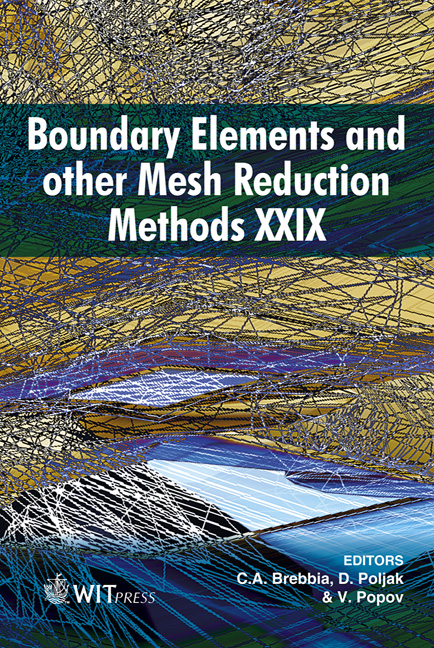Singular Superposition Elastostatics BEM/GA Algorithm For Cavity Detection
Price
Free (open access)
Transaction
Volume
44
Pages
10
Published
2007
Size
514 kb
Paper DOI
10.2495/BE070301
Copyright
WIT Press
Author(s)
D. Ojeda, B. G´amez, E. Divo, A. Kassab & M. Cerrolaza
Abstract
A method for the efficient solution of the inverse geometric problem for cavity detection using a point load superposition technique in the elastostatics boundary element method (BEM) is presented in this paper. The superposition of point load clusters to simulate the presence of cavities offers tremendous advantages in reducing the computational time for the elastostatics field solution as no boundary re-discretization is necessary throughout the inverse problem solution process. The inverse solution is achieved in two steps: (1) fixing the location and strengths of the point loads, (2) locating the cavity(ies) geometry(ies). For a current estimated point load distribution, a first objective function measures the difference between BEM-computed and measured deformations at the measuring points. A Genetic Algorithm (GA) is employed to automatically alter the locations and strengths of the point sources to minimize the objective function. The GA is parallelized and dynamically balanced. Upon convergence, a second objective function is defined and minimized to locate the cavity(ies) location(s) indicated as traction-free surface(s). Results of cavity detection simulations using numerical experiments and simulated random measurement errors validate the approach in regular and irregular geometrical configurations with single and multiple cavities. Keywords: boundary element method (BEM), cavity detection, genetic algorithm, elastostatics.
Keywords
boundary element method (BEM), cavity detection, genetic algorithm, elastostatics.





